‘12 Indigenous Peoples’ Rights in Data’ Defined by Global Indigenous Data Alliance

The establishment of Indigenous Peoples’ Rights in data marks the next chapter in the Indigenous Data Sovereignty movement.
Native nations and Indigenous Peoples around the world are increasingly demanding that their sovereign rights be recognized and protected in an expanding array of fields, including calls for the recognition of Indigenous Network Sovereignty, Food Sovereignty, Energy Sovereignty and Data Sovereignty, to name a few.
Stephanie Russo Carroll (Ahtna & Native Village of Kluti-Kaah), Associate Director of the University of Arizona Udall Center and Assistant Professor in the Mel & Enid Zuckerman College of Public Health, has dedicated her professional life to the Indigenous Data Sovereignty (IDSov) movement since 2015. Along with an international team of research professionals, Dr. Carroll is leading the charge to ensure that Indigenous Peoples are able to control the collection, application and use of data about their citizens, lands and cultures.
The most recent step in the decades-long process of securing data rights on behalf of the 250-600 million Indigenous individuals around the world came with the publication this spring of the “12 Indigenous Peoples’ Rights in Data” by the Global Indigenous Data Alliance (GIDA), of which Carroll is a founding member and current chair.
An “Explosion of Data”
In 2019, GIDA first published their CARE Principles for Indigenous Data Governance, which were created in response to accelerating calls for the world’s data to be open and accessible for research purposes, including the widespread adoption of the “FAIR Principles” asserting that all data should be made “Findable, Accessible, Interoperable, and Reusable.”
GIDA and other Indigenous Data Sovereignty advocates recognized that these “open data” principles were great from the standpoint of scientific advancement. However, such principles failed to recognize that data gleaned from Indigenous subjects was often extractive in nature, meaning that research involving Indigenous Peoples, lands and cultures was often used in a scientific vacuum far removed from the Indigenous subjects being studied.
This meant that, ultimately, those data often provided no benefit to the Indigenous subjects or communities themselves, and were even regularly shared and reused in stigmatizing ways without the consent of the people being studied and without consideration of the potential for disastrous consequences.
In the words of Carroll, the modern digital age has produced “an explosion of data,” the availability of which has far exceeded society’s ability to keep up in terms of standard setting and regulation. “Everybody’s playing catch up,” says Carroll, “and we as a global society don’t have the policies and practices in place to responsibly care for and use that data.”
Thus, the CARE Principles – which called for researchers to ensure that their data provided “Collective benefit,” that Indigenous subjects retain the “Authority to control” their own data, and that data be gathered and managed “Responsibly” and “Ethically” – were outlined in a way that deliberately complemented the widely adopted FAIR Principles,
The CARE Principles have since spawned dozens of academic papers in a variety of scholarly disciplines and have been adopted by international entities, national governments and nonprofit organizations, including UNESCO and the governments of Australia and New Zealand.
From “Principles” to “Rights”
But “principles,” generally speaking, are essentially “recommendations.”
Unlike laws, codes and policies, principles are not enforceable, so GIDA naturally saw a need to expand their work into an arena that had more concrete and actionable connotations. Thus, outlining Indigenous Peoples’ Rights in data seemed like the next logical step in service of advancing the IDSov movement.
The ‘12 Rights’ were identified through an inductive collaborative working group process led by the Collaboratory for Indigenous Data Governance (Collaboratory; another international IDSov organization led by Carroll) which reviewed IDSov literature and existing implementation activities.
Descriptions were then drafted and circulated for comment across the networks associated with GlDA before they were finalized and released on the GIDA-global website this spring.
The 12 Indigenous Peoples’ Rights in Data
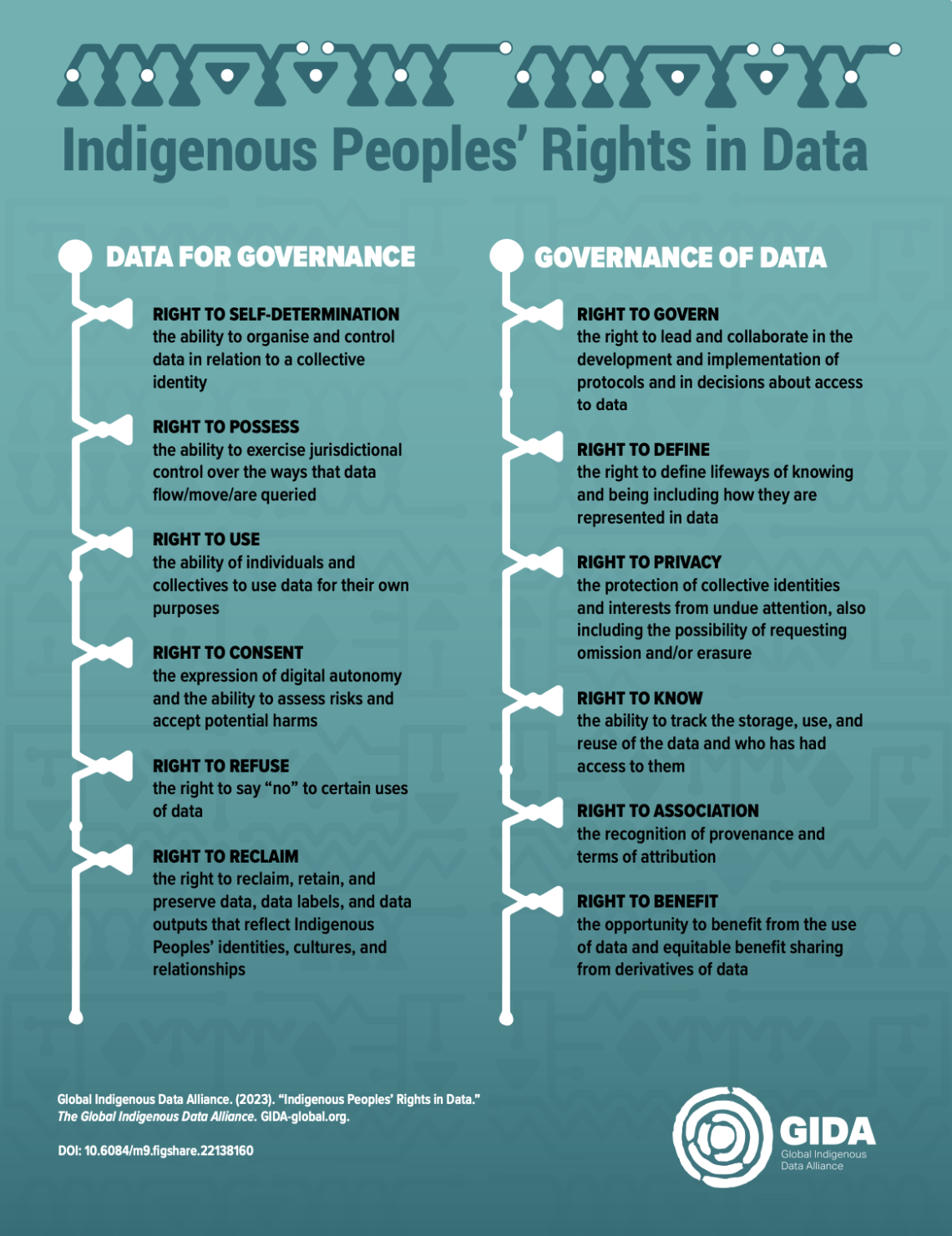
The Rights outlined by GIDA fall under two basic headings: 1) “Data for Governance,” which primarily relates to the ability of Indigenous communities to access and use data themselves; and 2) “Governance of Data,” which relates to the ability of Indigenous communities to internally steward and externally influence the use of data.
Per the first academic paper on the 12 Rights published in the journal Frontiers in Research Metrics in Analysis in May 2023, the “12 Indigenous Peoples’ Rights in Data” include:
Data for Governance:
- Right to self-determination: the ability to organize and control data in relation to a collective identity
- Right to reclaim: the right to reclaim, retain, and preserve data, data labels, and data outputs that reflect Indigenous Peoples’ identities, cultures, and relationships
- Right to possess: the ability to exercise jurisdictional control over the ways that data flow/move/are queried
- Right to use: the ability of individuals and collectives to use data for their own purposes
- Right to consent: the expression of digital autonomy and the ability to assess risks and accept potential harms
- Right to refuse: the right to say “no” to certain uses of data
Governance of Data
- Right to govern: the right to lead and collaborate in the development and implementation of protocols and in decisions about access to data
- Right to define: the right to define lifeways of knowing and being including how they are represented in data
- Right to privacy: the protection of collective identities and interests from undue attention, also including the possibility of requesting omission and/or erasure
- Right to know: the ability to track the storage, use, and reuse of the data and who has had access to them
- Right to association: the recognition of provenance and terms of attribution
- Right to benefit: the opportunity to benefit from the use of data and equitable benefit sharing from derivatives of data
“Indigenous Peoples have these rights regardless of whether or not they are acknowledged by existing laws,” explains Carroll. And, now that they’ve been named, the GIDA and Collaboratory teams have set out to disseminate them to the research world with the hope that they will be recognized, normalized and, eventually, encoded by researchers, institutions and funding organizations, writ large.
Why a Siberian Shaman Is a Thorn in the Kremlin’s Side
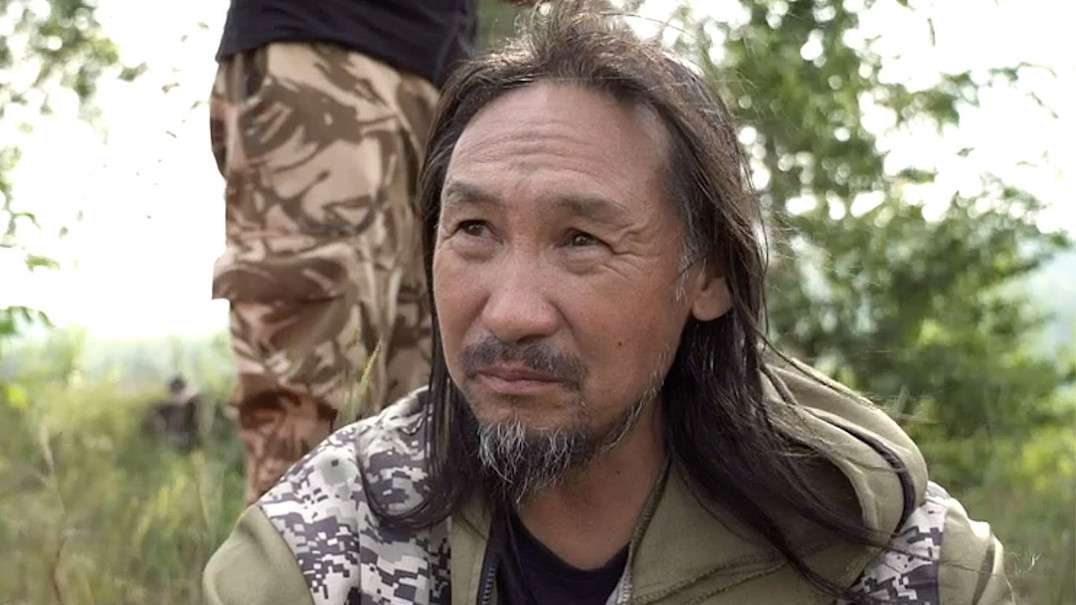
Alexander Gabyshev, a self-styled shaman from Russia’s Far East, has been held in compulsory psychiatric treatment since 2019, after he set out on a cross-country trek to Moscow with the goal of peacefully expelling President Vladimir Putin from power and “restoring democracy” to Russia by performing a shamanic ritual on Red Square.
On Monday, a court in Russia’s Far East ordered to transfer him from a neuropsychiatric dispensary to a general psychiatric hospital in Yakutsk, where he will undergo a “milder” form of treatment.
Russia’s Memorial human rights organization has declared Gabyshev to be a political prisoner.
The Free Yakutia Foundation, an anti-war movement in Gabyshev’s home republic of Sakha, has penned this op-ed on how Gabyshev’s message was able to resonate with so many ordinary Russians.
Two years have passed since Alexander Gabyshev’s second placement for compulsory treatment in a psychiatric dispensary. The practice of using punitive psychiatry as a tool to silence dissidents has been known and loved in Russia since the persecution of Pyotr Chaadayev by the Okhranka, the Tsar’s security service, in the 19th century.
However, the focus of this discussion is not on historical examples, but rather on the phenomenon of the “Warrior Shaman” and its place in both Gabyshev’s native republic of Sakha and Russian politics.
Alexander Prokopyevich Gabyshev, a janitor, welder, handyman, and graduate of the history department at Yakut State University, initially appeared to be an ordinary citizen who didn’t fit into the prevailing capitalist system.
But he, unlike so many others, had the courage to speak out against loneliness, disorder and injustice.
His campaign, which began in August 2018, initially had no specific objectives, although Gabyshev identified himself as a pilgrim and someone who embraced the beliefs of Indigenous peoples of the North.
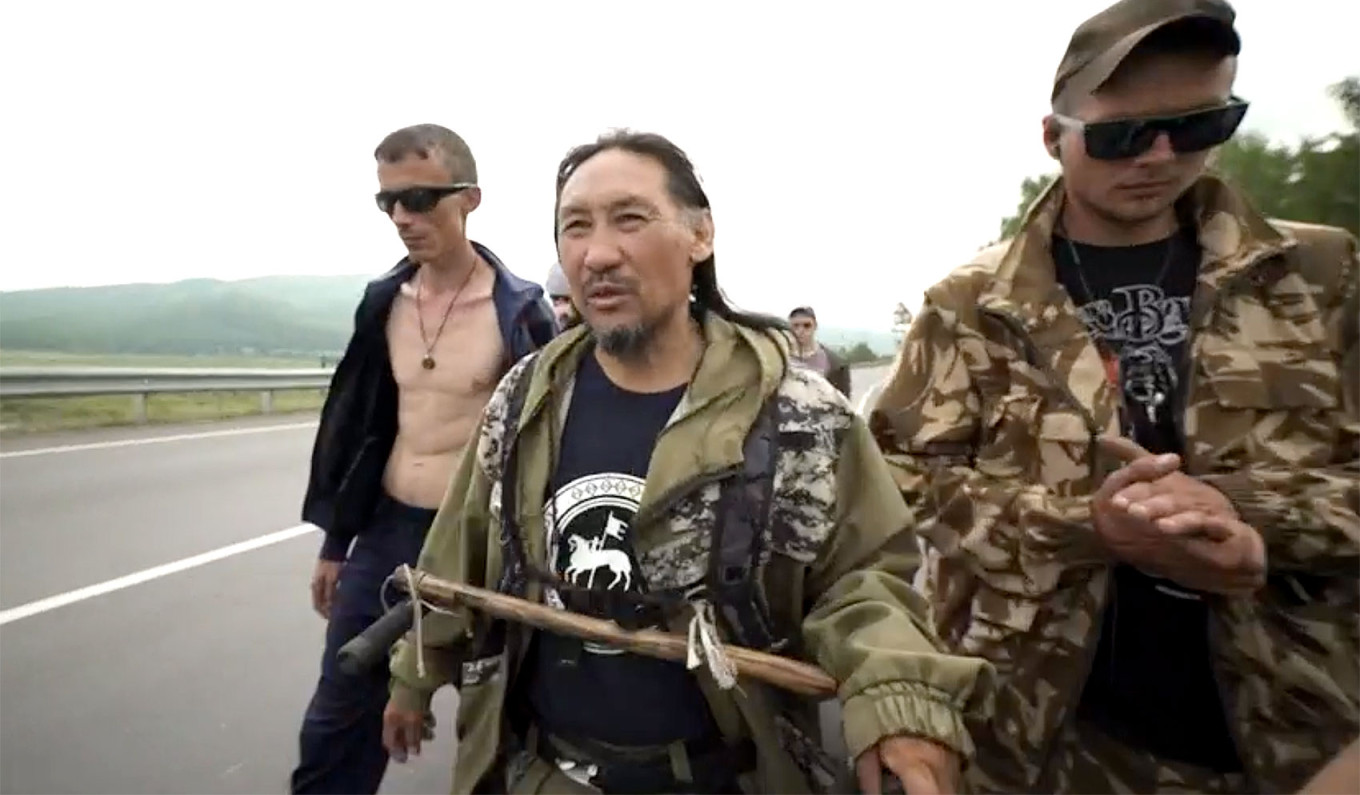
In the summer of the following year, Gabyshev shifted his focus from missionary work to the political agenda, perhaps recognizing the demand for change in his interactions with others.
The shaman embarked on a cross-country trek and pledged to hold an Algys ceremony on Red Square, after which, he believed, Putin would resign voluntarily. Despite the seemingly archaic image he adopted, Gabyshev advocated for the establishment of democratic values, emphasizing the need for a balanced relationship between the government and the people:
“Democracy must be without fear. Now people are afraid to speak, they are afraid that they will be fired, they will be deprived of their salaries… …There must be a balance between the government and the people. And the struggle for balance sometimes goes on, yes, by bloody methods, if the tyrannical state regimes do not allow them to balance their power in a democratic way. And Putin will defend statehood, which we will now try to balance with democracy.”
Although Alexander Gabyshev’s campaign was short-lived, any news related to the “Warrior Shaman” inevitably garnered millions of views and thousands of supportive comments. Additionally, he amassed a sizable group of direct followers.
What caused this?
The popularity of this unsuccessful and seemingly naive protest march can be attributed to the boldness and simplicity of Gabyshev’s image. One can draw parallels between his trek from Russia’s Far East to Moscow with Mahatma Gandhi’s “Salt March,” Lenin’s “walkers,” or even with the plot of the 1998 Russian tragicomedy starring Mikhail Evdokimov, “Why Don’t We Send… a Messenger?”
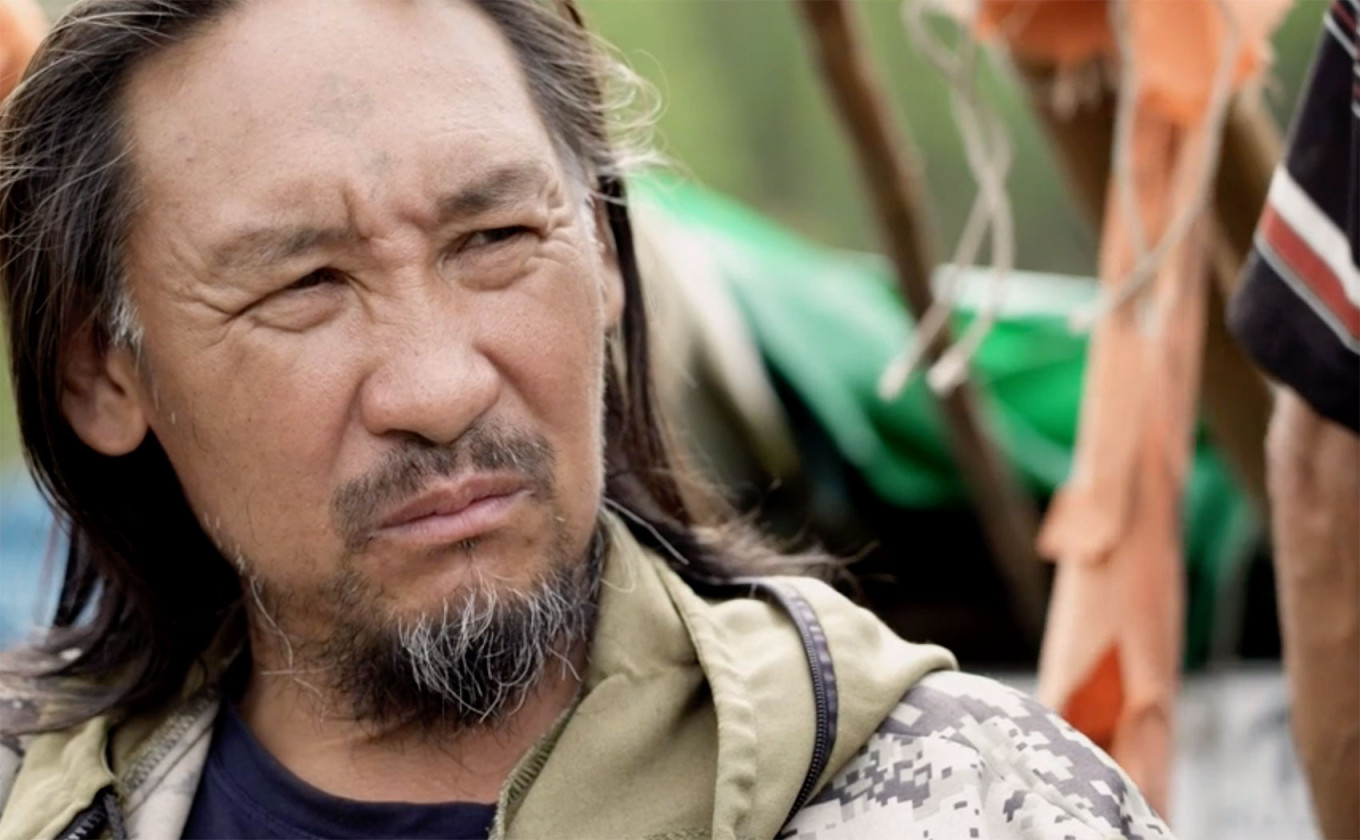
The shaman’s pilgrimage to Red Square is a peaceful and relatable expression of despair, representing an ordinary person’s final attempt to reach out to the authorities in Moscow. The homemade shaman’s tambourine becomes the voice of millions of Russians, and the smoke from an unlit ritual bonfire symbolizes the fire that those who haven’t heard the “Shaman Warrior’s” call will soon witness.
It may be that the dictator’s superstitious nature and love for rituals and spiritualism played a role in the decisive and aggressive arrest of the shaman. Currently, Gabyshev remains under compulsory treatment, effectively making him a political prisoner.
In the eyes of the Kremlin, this former welder and hard worker is deemed more dangerous than Navalny and Yashin, as the rebellion of an ordinary person, which resonates with most Russians, is difficult to analyze and predict in terms of its potential threat to the existing constitutional order.
Seminar: The war’s impact on Indigenous peoples of Russia
Russia’s military attack on Ukraine has significantly impacted the life of Indigenous Peoples in Russia. One of the implications of this situation is that some Indigenous representatives who have openly opposed Russia’s actions in Ukraine, have had to leave their native land for security reasons. For Indigenous peoples, the connection to their land is an integral part of their culture.
There are many Sámi activists who fled Russia after the start of the war in Ukraine. This event will address the impact of the war on relations between the Sámi on the Russian side of the border and Sámi on the Norwegian side of the border. What is the current situation of the Indigenous Peoples of the North, Siberia and the Far East after the Russian invasion of Ukraine?
In this event we will meet representatives of the Sámi People of Kola Peninsula.
Panel: Andrei Danilov, Aleksandr Slupachik, Andrei Zhvavyi, Valentina Sovkina, Dmitry Berezhkov.
Date: 15.07.2023
Time: 14:00
Place: Báldalávvues
Strengthening Buryat Pride Through Shatar
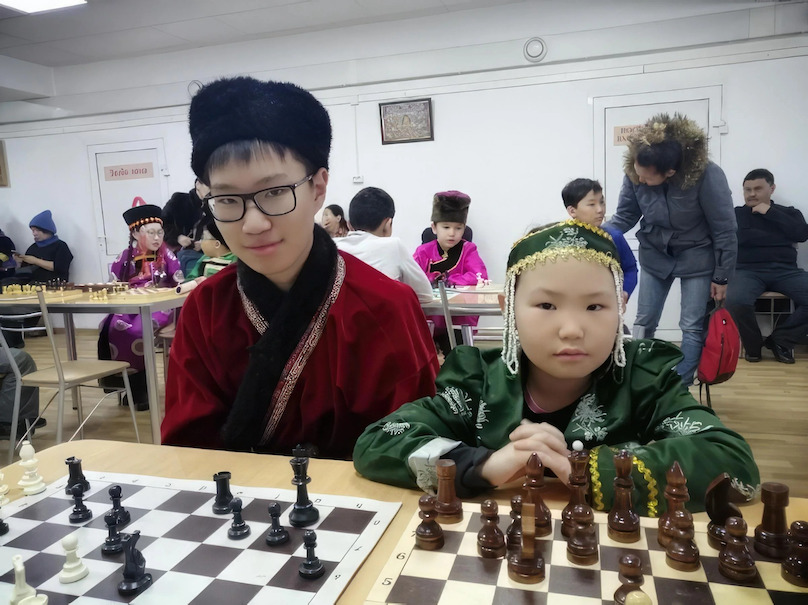
Buryats are one of the most numerous Indigenous Peoples living around Lake Baikal in Siberia. Traditionally, they were nomadic cattle breeders and semi-nomadic herders with seasonal movements between permanent winter and summer settlements. Buryats in the Predbaikalia region, which is on the western side of Lake Baikal, have kept shamanism as their main spiritual practice, while Buryats in Transbaikalia, on the eastern side of Lake Baikal, adopted Buddhism in the 19th century. On both sides of the lake some Buryats practice a form of syncretism that combines elements of both traditions.
The western side of Baikal is the Irkutsk Oblast. According to WorldGEO, Indigenous Buryats constitute 3.3 percent, or approximately 80,000, of the total population of 2.4 million. Prior to 2008, the Ust-Orda Okrug (county) existed as an autonomous entity. In 2008, it was absorbed by the Irkutsk Oblast, a region now predominantly inhabited by Russians. Since then, it has retained only a few features of cultural autonomy. Representation of Indigenous Buryat people is extremely limited in public spaces.
One of the ways Buryat cultural autonomy and continuity is maintained is through the organization of cultural and sports festivals dedicated to the celebration of Sagaalgan, a Buryat holiday associated with the beginning of the New Year according to the lunar calendar, and Sur-Kharban, an ancient Buryat sports festival celebrated after spring field work. During Sagaalgan, there are national sports competitions in wrestling, archery, shagai (a game that uses goat or sheep bones instead of dice), and shatar (Buryat chess). Sur-Kharban is an event that brings together all athletes living in the region. Some of its sporting events include soccer, volleyball, table tennis, checkers, chess, and Buryat national sports of horse racing, wrestling, archery, shatar, and shagai.
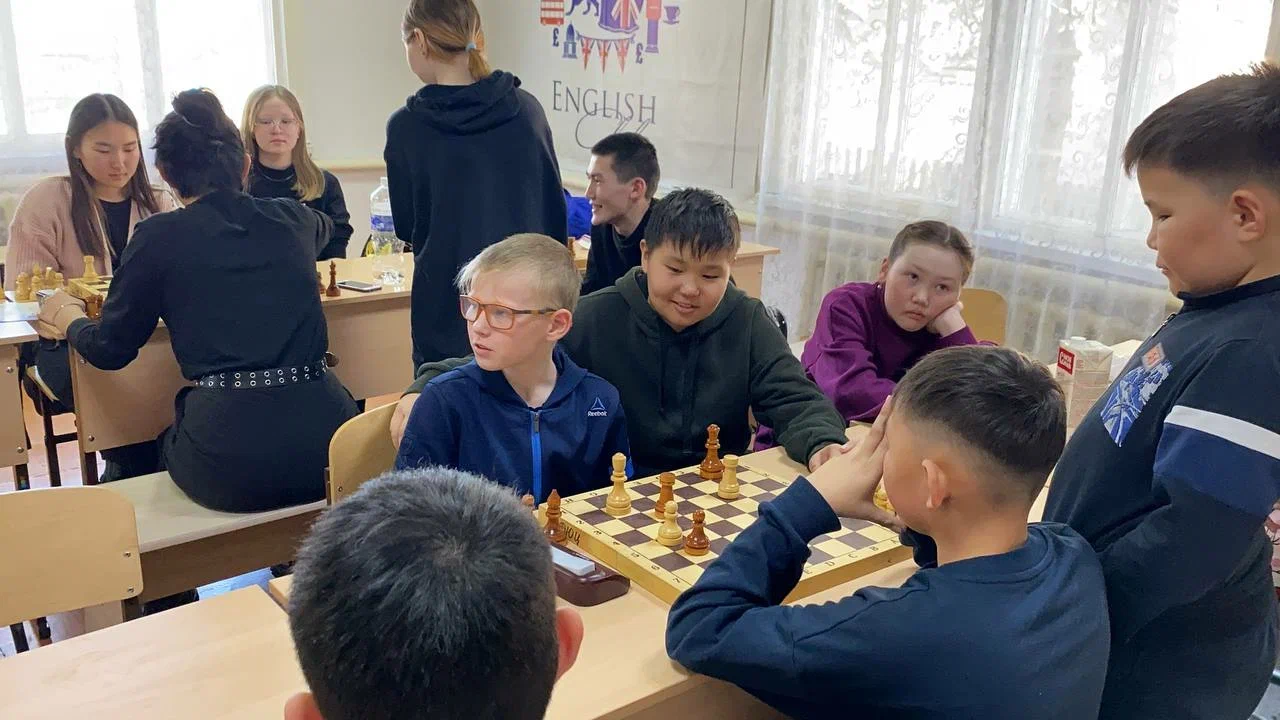 Youth attend a master class and a shatar tournament in Novonukutsk, Russia.
Youth attend a master class and a shatar tournament in Novonukutsk, Russia.
During Soviet times, the celebration of Sur-Kharban was more of a sporting than a cultural event. It did not include the important elements such as wearing traditional dress, performing traditional songs and dance, and the traditional sports included only wrestling and horse racing. Shatar and archery were introduced into the tournament competitions of Sur-Kharban in the early 2000s, and shagai was introduced about a decade later. In archery and shagai, participants are required to wear Buryat traditional clothing. There is no such requirement for shatar tournaments, but participants have been increasingly wearing traditional attire at the events. It is also becoming more popular to wear traditional clothing on Buryat holidays and at various other national sporting events. In recent years, there has been an increase in interest by youth in European chess; the number of participants in regional competitions has increased by 10 percent annually. However, among national sports, shatar currently occupies an undeservedly small place: there are no shatar clubs or classes in Irkutsk region. Shatar tournaments only occur within the annual celebration of Sur-Kharban and Altargana, a holiday that is celebrated biennially.
The Shatar 38 Project is seizing on this growth in popularity as an opportunity to teach young people to play shatar, as well as to attract new players to this sport. Funded by the Keepers of the Earth Fund (KOEF), Shatar 38 aims to fill the existing cultural gap by promoting Buryat culture through the popularization of the Buryat game. To promote shatar as a tool for intercultural dialogue, Shatar 38 organizes regional tournaments and holds master classes on shatar in chess clubs in the city of Irkutsk during Sur-Khurban and at the Erdyn games. So far, about 500 people have directly participated in the project, and an additional 4,000 people will be informed about the project and shatar through social media, websites, and social networks.
Maria Kuklina, head coordinator of the Shatar 38 Project, works as a chess coach at the Irkutsk National Research Technical University where she has been promoting shatar since 2019. Every year, the University hosts open city championships in shatar where most of the participants have been Buryat students who attend the school. With support of a KOEF grant, Shatar 38 has expanded the reach of the game. So far in 2023, three tournaments and five master classes have been held in Irkutsk and the Nukut district. Project participants also plan to hold master classes in chess clubs in the region and organize a large regional shatar tournament in June. The master classes also serve as space to teach people about Buryat cultural connections to shatar, the history of the game, and how the sport fostered friendship between Peoples. In addition, Shatar 38 is developing a mobile application and is promoting the game on social media using a group created in the messaging app Viber.
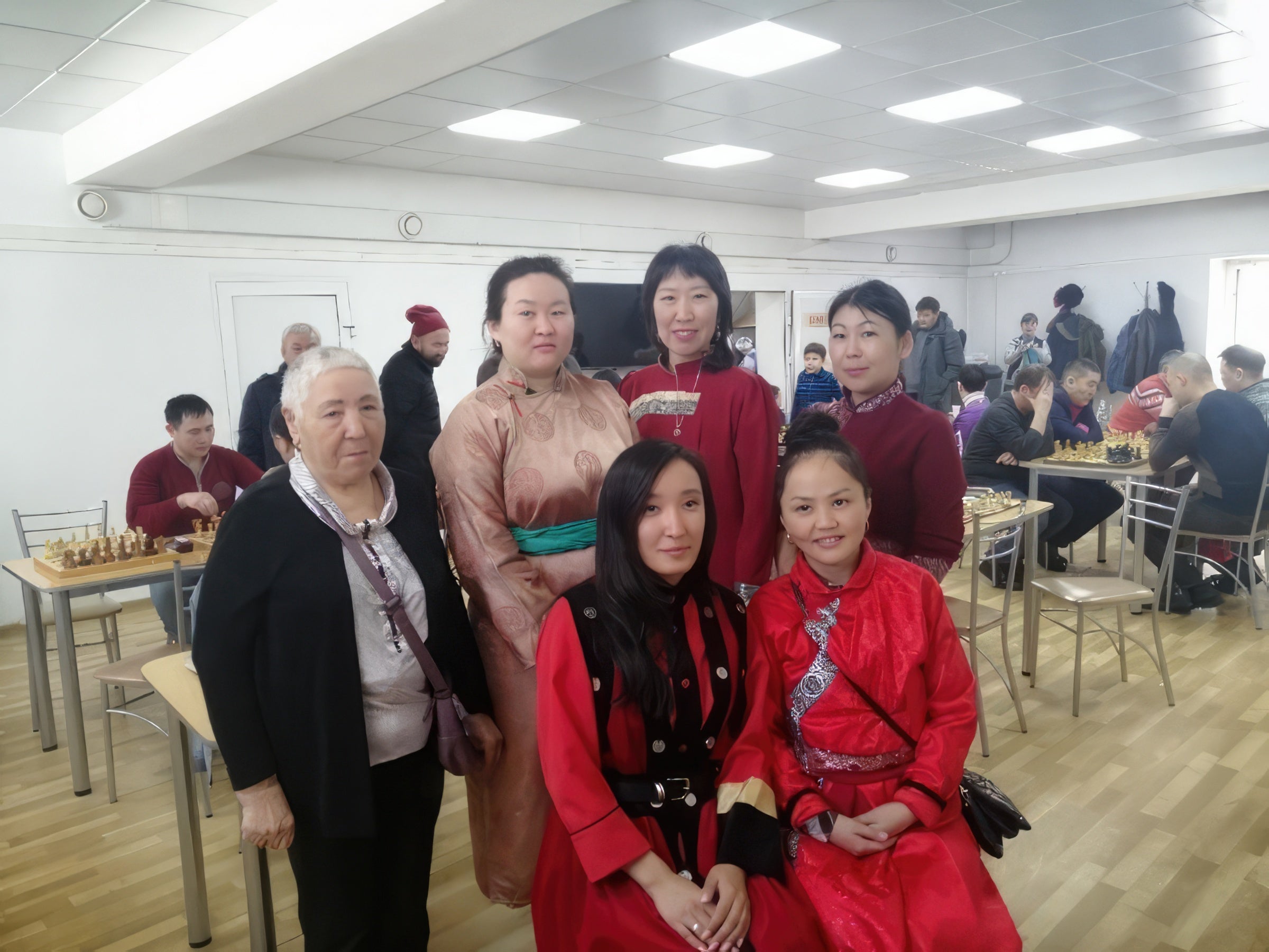 Participants proudly wear their Buryat clothing at a chess tournament in a datsan in Irkutsk, Russia.
Participants proudly wear their Buryat clothing at a chess tournament in a datsan in Irkutsk, Russia.
The organizers of the shatar tournaments encourage participants to wear Buryat traditional clothing by offering a prize for the best traditional attire. Buryat traditional clothing shows the complex history of different eras and the influences of various cultures and tribes across southern Siberia and Central Asia. Traditional dress is an important marker of ethnic identification, and traditional Buryat clothing is characteristic of steppe nomadic herders. It uses sheepskin materials derived from cattle ranching and is distinguished by the cut of the upper garment, the presence of a sleeveless jacket, the finishing of the enger (a special decorative feature on men’s cloaks), and slipperlike shoes called gutals. Women traditionally covered their hair with a headdress and wore temporal and breastplate ornaments made of coral. The clothing of Predbaikalia Buryats differs from that of Transbaikalia Buryats in size, cut, material, character of sewing, and ornamentation.
Buryat communities in the territory of Predbaikalye consist of three main tribes: the Bulagat, Ekhirit, and Khongodor, who fuse their Tungus, Oirat and Turkic origins with Mongolian influence and traditions. Their traditional clothing also changed significantly under Russian influence; under Soviet and, later, Russian colonization and widespread globalization, traditional clothing has been replaced by a more urban style. However, with growing revival of Indigenous identity, traditional clothing is being reconstructed by museums and national centers for cultural heritage, including those with State support, such as the Ust-Ordyn Center of Folk Art. Modern designers are also re-interpreting the theme of traditional Buryat clothing.
The revival of religious practices in post-Soviet Buryat communities is also expressed through clothing. Original shamanic practices are being revived, along with the reconstruction of local shamanic attire. Buddhist temples often serve as cultural centers, and people visit datsans (Buddhist monasteries) wearing traditional clothes. They shop in local stores in datsans that offer traditional clothes, art, crafts, and souvenirs. Fashion design competitions are taking place at different levels including the international Buryat Altargana festival, ethno-fashion contests at Torgon Zam, the international Ethnopodium festival, and many others in Ulan-Ude, Irkutsk, Ust-Orda, and Aginsk, the main centers of the Indigenous Buryat population. Additionally, in preschools and elementary schools, teachers are educating children about the history, appearance, features, and symbols of traditional Buryat clothing while teaching children how to make it. It is also becoming more popular to make souvenir dolls dressed in traditional clothing made by children, professional artists, and craftspeople as a way to showcase Buryat culture.
In shatar, the main principles of chess are preserved, but there are some minor differences. The pawn moves only one square forward; the knight has no right to checkmate; and the queen moves vertically and horizontally, but diagonally only to the adjacent square.
Contemporary Buryats have started to wear traditional dress when attending national and religious festivals and events such as Sagalgaan, Sur-Kharban, tribal taialgans (prayers), and family events such as weddings, anniversaries, and milanguud (children’s birthday parties). The use of modern and traditional Buryat clothing continues to increase the visibility of Buryat culture, proving that it is alive and resurging despite many years of colonization and assimilation.
In 2022, the Shatar 38 Project received a grant from the Keepers of the Earth Fund, an Indigenous-led fund at Cultural Survival designed to support Indigenous Peoples’ advocacy and community development projects globally. Since 2017, we have supported 293 projects in 40 countries through small grants and technical assistance, totaling $1,496,864.
Maria Kuklina (Buryat) and Marina Dagdanova (Buryat) teach at Irkutsk National Research Technical University. Vera Kuklina (Buryat) works as a Research Professor at George Washington University. Together, they coordinate the Shatar 38 Project.
All photos courtesy of Shatar 38 Project.
SIRGE COALITION WELCOMES THE EUROPEAN PARLIAMENT’S OFFICIAL POSITION ON THE CORPORATE SUSTAINABILITY DUE DILIGENCE DIRECTIVE RELATED TO INDIGENOUS PEOPLES
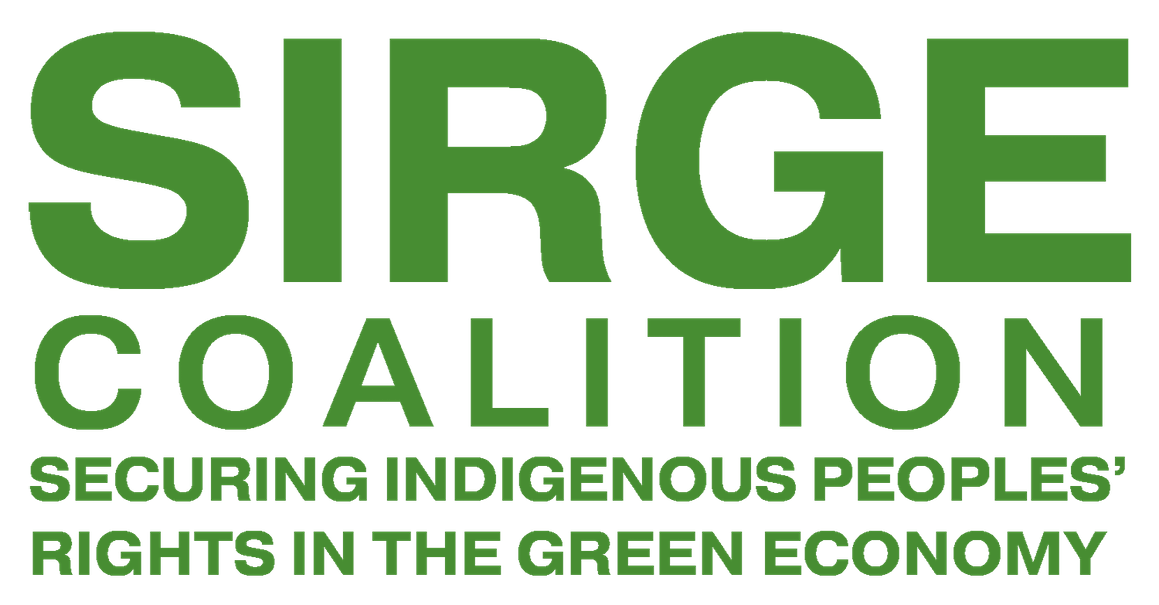
The Securing Indigenous Peoples’ Rights in the Green Economy (SIRGE) Coalition welcomes the European Parliament’s common position on the proposed European Union due diligence rules. The position of the European Parliament supports the full respect for the United Nations Declaration on the Rights of Indigenous Peoples in the new Corporate Sustainability Due Diligence Directive (CSDDD).
Why Does the CSDDD Matter for Indigenous Peoples?
The EU is one of the largest markets in the world with over 700 million consumers and much of what happens in the European Union dictates how raw materials are sourced, processed, and traded globally. As we transition toward a low-carbon economy, the CSDDD is an important step towards corporate accountability, responsible business conduct, and access to justice for Indigenous Peoples.
There is a dramatic increase in demand for minerals such as nickel, lithium, cobalt, and copper for renewable energy technologies as a result of the Green and Digital Transitions. As a result, mining is expanding at an accelerated pace. Since Indigenous-managed lands cover more than a quarter of the Earth’s surface and Indigenous Peoples manage 80% of the planet’s biodiversity, increased mining directly threatens their rights, their territories, and the world’s biodiversity. Land is the basis for livelihood, identity, and survival for Indigenous Peoples. Therefore, given their important role and the great risks to Indigenous Peoples in this green transition, Indigenous Peoples must be fully and meaningfully consulted and involved throughout the value chain, and Indigenous priorities must be integrated into decision-making with the full respect of Indigenous-led protocols of Free, Prior and Informed Consent (FPIC).
The following figures provide a glimpse of Indigenous Peoples’ risks:
- Of 5,097 mining projects globally that involve some 30 minerals used in renewable energy technologies, 54% are located on or near Indigenous Peoples’ lands and territories (via Nature Sustainability).
- In the United States, 97% of nickel, 89% of copper, 79% of lithium, and 68% of cobalt reserves – primary minerals needed for the energy transition – are located within 35 miles of Native American reservations (via MSCI).
- Over a period of 12 years, there were 510 human rights allegations made against all 115 companies involved in transition mineral extraction; this figure represents only reported instances; 49 of the allegations involved Indigenous Peoples (via Business & Human Rights Resource Centre). In 2022, almost 40% of the attacks related to transition minerals were against Indigenous Peoples or their communities.
Indigenous Peoples’ Rights and Biodiversity Protection Are Two Sides of the Same Coin
Indigenous Peoples are stewarding and protecting at least 80% of the world’s remaining biodiversity, their involvement in the transition is not only crucial on its own but also for the health of the planet.
As expressed in the European Parliament proposal amendment 10, recital 9:
“the General European Environment action programme to 2030, the framework for Union action in the field of the environment and climate, aims to protect, restore and improve the state of the environment by, inter alia, halting and reversing biodiversity loss.
As Indigenous rights and biodiversity conservation are inextricably linked, we emphasize the importance of respecting both simultaneously.
Indigenous Peoples’ Call to European Leaders
The SIRGE Coalition calls on European Member states to follow the European Parliament leadership and adopt a CSDDD that guarantees respect for the rights of Indigenous Peoples as stated in the United Nations Declaration on Indigenous Peoples, including the right to Free, Prior and Informed Consent. Taking this approach in the coming trilogue in the European Union will ensure a sustainable, just, and no-one-left-behind transition for Europe and beyond.
The SIRGE coalition has advocated and urged for the explicit inclusion of Indigenous Peoples’ Rights as enumerated in the United Nations Declaration on the Rights of Indigenous Peoples (UNDRIP), the International Labour Organisation’s Indigenous and Tribal Peoples’ Convention, 1989 (No. 169), including the right to Free, Prior and Informed Consent into the European CSDDD. In this frame, SIRGE applauds the European Parliament’s proposed new amendments (detailed below) and asks them to hold these proposals in the trilogues. SIRGE also calls all European Leaders to build further and strengthen these references in the final CSDDD version.
- Amendment 60, recital 44 c:
Companies should take appropriate measures to carry out meaningful engagement with affected stakeholders allowing for genuine interaction and dialogue in their due diligence process. Engagement should cover information and consultation of affected stakeholders and should be comprehensive, structural, effective, timely and culturally and gender responsive. […] The information and consultation of affected stakeholders should […] fully respect the United Nations Declaration on the Rights of Indigenous Peoples.
- Article 3 – paragraph 1 – point na:
‘vulnerable stakeholders’ means affected stakeholders that find themselves in marginalised situations and situations of vulnerability, due to specific contexts or intersecting factors, including among others, […] indigenous peoples,
- Article 8 d:
Carrying out meaningful engagement with affected stakeholders
- Member States shall ensure that companies take appropriate measures to carry out meaningful engagement with affected stakeholders that allows for genuine interaction and dialogue in their due diligence process. To this end, the engagement shall cover information and consultation of affected stakeholders and shall be comprehensive, structural, effective, timely and culturally and gender sensitive.
7. […]. Companies shall pay particular attention to the needs of vulnerable stakeholders, and […]fully respect the United Nations Declaration on the Rights of Indigenous Peoples.
- Annex I – Part I – subheading 1
- Rights and prohibitions included in international human rights agreements
Point 19a: The rights of indigenous peoples to self-determination in accordance with Article 1 of the International Covenant on Civil and Political Rights, Article 1 of the International Covenant on Economic, Social and Cultural Rights, and Article 5 of the International Convention on the Elimination of All forms of Racial Discrimination, and their right to give, modify, withhold or withdraw their free, prior, and informed consent to interventions, decisions and activities that may affect their lands, territories, resources and rights, in accordance with Article 27 of the International Covenant on Civil and Political Rights and Article 15 of the International Covenant on Economic, Social and Cultural Rights and Articles 2 and 5 of the International Convention on the Elimination of All Forms of Racial Discrimination;
Point 20 The indigenous peoples’ right to the lands, territories and resources which they have traditionally owned, occupied or otherwise used or acquired in accordance with Articles 1 and 27 of the International Covenant on Civil and Political Rights and Articles 1, 2 and 15 of the International Covenant on Economic, Social and Cultural Rights and Article 5 of the International Convention on the Elimination of All Forms of Racial Discrimination.
- Annex I – Part I – subheading 2
The International Labour Organisation’s Indigenous and Tribal Peoples’ Convention, 1989 (No. 169)
SIRGE Members’ Statements:
Galina Angarova (Buryat), Executive Director, Cultural Survival, said, ”We welcome this important step towards securing Indigenous Peoples’ inherent rights. The CSDDD has the potential to transform the EU legal system and move the human rights and environmental due diligence processes from voluntary audits and certification schemes to one of true legal accountability for non-compliance with international and national laws. The CSDDD must safeguard marginalized communities’ rights, especially Indigenous Peoples’ rights, and guarantee mechanisms for Free, Prior and Informed Consent.”
Pavel Sulyandziga (Udege), President, Batani Foundation, said “This is a significant step in ensuring that the rights of Indigenous Peoples are respected, protected, and fulfilled. The European Union has the potential to set a model for the rest of the world on how to conduct business in a just and non-harming way. As a Coalition we look forward to the final draft of the directive and its full implementation on the ground. ”
Kate R. Finn (Osage), Executive Director, First Peoples Worldwide said, “Incorporating the UN Declaration on the Rights of Indigenous Peoples as a standard for the EU’s proposed Corporate Sustainability Due Diligence Directive gives corporations operating in the global sector a baseline approach to assessing Indigenous Rights Risk, and it provides just and equitable means for rights holders to participate where community impacts are significant. In particular, the directive’s explicit language about Free, Prior and Informed Consent enables companies to understand ground-level impacts Indigenous Peoples face.”
Christoph Wiedmer, Co-Director, the Society for Threatened Peoples, Switzerland, said “This directive enshrines international conventions and declarations such as the UN Declaration of the Rights of Indigenous Peoples, the UN Guiding Principles on Business and Human Rights and the Indigenous and Tribal Peoples Convention ILO 169 into law, which is necessary to ensure that enterprises are accountable if they violate Indigenous Peoples’ rights.”
Jennifer Krill, Executive Director, Earthworks said “It’s imperative that the EU directive sets a high, legal standard for a company’s responsibility to conduct their environmental and human rights due diligence, so communities are protected and have legal recourse, especially as companies in the renewable energy and transportation supply chain will need to source more minerals to meet the demands for an energy transition by producing technologies like solar panels and electric vehicles. We encourage other nations, particularly the United States, to follow suit with similar legal protections for marginalized communities, including Indigenous Peoples, who will be impacted by the increased onshoring of transition minerals.”
About the SIRGE Coalition
The Securing Indigenous Peoples’ Rights in the Green Economy (SIRGE) Coalition is a coalition of Indigenous Peoples and leaders, who, along with our allies, champion a just transition to a low-carbon economy. The SIRGE Coalition launched on August 9, 2022, the International Day of the World’s Indigenous Peoples. Members of the Coalition include Cultural Survival, First Peoples Worldwide, Batani Foundation, Earthworks, and the Society for Threatened Peoples.
The SIRGE Coalition’s primary goal is to elevate Indigenous leadership through the creation of a broad coalition and the promotion of constructive dialogue. In accordance with the United Nations Declaration on the Rights of Indigenous Peoples (UNDRIP), the coalition will uphold all rights of Indigenous Peoples, including their cultures, spiritual traditions, histories, and especially their rights to determine their own priorities as to their lands, territories, and resources. Indigenous leadership is essential as Indigenous Peoples conserve about 80 percent of the planet’s remaining biodiversity.
The SIRGE Coalition is staffed by an Executive Committee made up of representatives from each organization and is governed by an Indigenous Steering Committee made up of two representatives of Indigenous Peoples from each of the seven socio-cultural regions across the globe along with a global chairperson and the chairperson of the Executive Committee, chosen from Indigenous members.
The SIRGE Coalition is calling for full implementation of the UNDRIP, including the right to Free, Prior and Informed Consent, in all endeavors related to the extraction, mining, production, consumption, sale, and recycling of transition and rare earth minerals around the world.
Fights for Climate, Labor and Indigenous Rights Converge at Auto Supply Chains
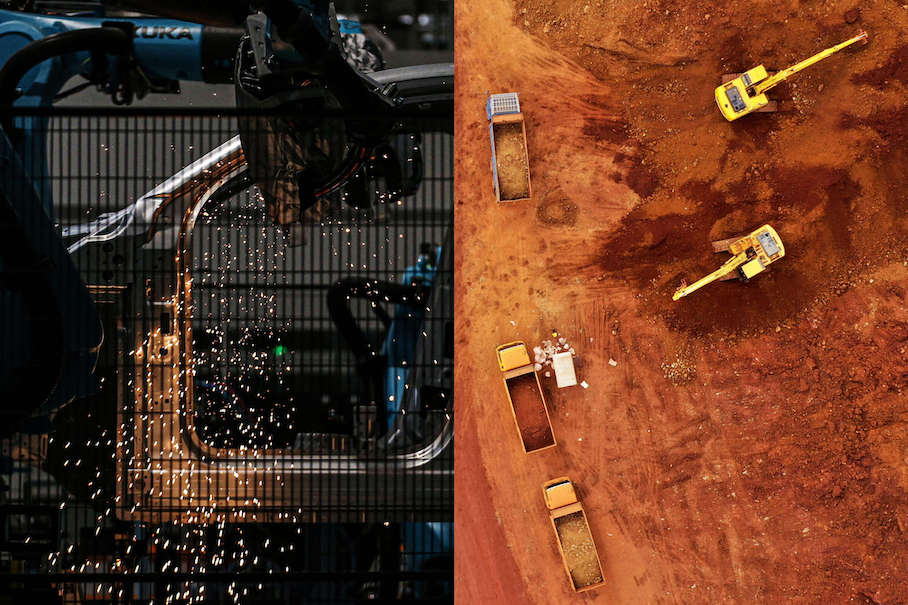
The electric vehicle supply chains are neither green nor just — but they are crucial organizing spaces, activists say.
Aglobal boom in the production of electric vehicles (EVs) propelled by battery power instead of internal combustion engines is imminent. Worldwide, around 14 percent of all new cars sold in 2022 were electric, up from less than 5 percent in 2020. In the U.S., electric car sales increased from 0.2 percent in 2011 to 4.6 percent in 2021, and then jumped to 8 percent in 2022. Analysts predict that number could rise to 40 percent or more by 2030.
But the shift away from fossil fuel-powered vehicles, while broadly welcome, raises numerous other questions about the production process behind EVs.
For instance, will the carbon-intensive production of the steel that makes electric vehicles also be decarbonized? Will the rights of Indigenous communities disproportionately impacted by the extraction of critical minerals be respected, including their prerogative to withhold consent around mining projects? Will new jobs respect the rights of workers, including their right to organize into unions?
Earlier this year, a new network called Lead the Charge, comprised of several advocacy organizations, came together to address these concerns and pressure automakers to account for climate and environmental justice, labor and Indigenous rights issues. The goal is to ensure that, from the beginning, the world-defining transition to EVs will accelerate a categorical shift away from climate-destroying fossil fuels and advance goals around basic rights, especially for Indigenous communities and workers.
By focusing on automakers, whose decisions hold immense leverage over the future of crucial global supply chains, Lead the Charge hopes to advance a just and fossil-free future across the entire supply chain — not just around what comes out of exhaust pipes.
“We want to make sure that the transition is not just shifting tailpipe emissions to other emissions and abuses throughout the production side of the supply chain or exacerbating existing issues,” said Erika Thi Patterson, auto supply chain campaign director for Public Citizen’s Climate Program.
In addition to Public Citizen, members of Lead the Charge include the Sunrise Project, Mighty Earth, First Peoples Worldwide, Cultural Survival, Sierra Club, and other groups.
Lead the Charge
Simply put, there’s no way to address the climate crisis without decarbonizing auto transportation. Passenger vehicles account for around 15 percent of all greenhouse gas emissions globally.
Of course, this means moving away from vehicles powered by burning fossil fuel and toward transportation run on fossil-free energy sources. But when it comes to more fully decarbonizing the total emissions released by automobiles and advancing a just transition, that’s just a start.
Electric vehicles are the final link in a vast global supply chain that currently involves the carbon-intensive production of raw materials like steel and aluminum that contribute enormously to global warming, as well as mining that involves practices that often run roughshod over the rights of Indigenous people and workers. According to one report, the manufacturing and supply chain for EVs must reduce greenhouse gas emissions by 81 percent by 2032 to keep at the 1.5 degrees Celsius Paris Agreement goal.
This makes auto supply chains more than sequential lines of production whose end results are vehicles. Rather, they are sites where the battle for climate, racial and economic justice is playing out, making them crucial organizing spaces for anyone who cares about equality, rights and sustainability.
Automakers sell around 80 million cars a year globally. Their production needs to structure entire global supply chains. Steel, for example, makes up more than half of the average vehicle. This gives automakers immense leverage to set terms for purchasing requirements within those supply chains.
For the Lead the Charge campaign, this all adds up to a sense of urgency, not merely to push slow-moving auto giants to ditch fossil fuel-powered vehicles more quickly, but to ensure that, amid a once-in-a-lifetime transition to a new world of electric vehicles, the emerging supply chains respect and protect Indigenous and worker rights, and show a commitment to decarbonization that goes beyond only tailpipe emissions.
The problems in the current auto supply chain are multiple, says the campaign.
The materials that go into auto production — aluminum, steel, batteries — are themselves the end products of production chains with huge carbon footprints. The steel sector, for example, is behind 8 to 11 percent of annual global greenhouse gas emissions, and its production relies heavily on coal-fired energy.
“When mining companies come to the territories of Indigenous people … the resources leave, without any or very little economic remuneration…. But of course, the environmental degradation stays.”
“Electric is really just the start,” said Matthew Groch, a senior director on heavy industry at Mighty Earth, a climate advocacy group and a member of the Lead the Charge network. He points out that steel and aluminum “make up 40 to 60 percent of embodied emissions for motor vehicles.”
“We’ve had conversations with automakers,” says Groch, “where steel and aluminum decarbonization in their supply chain just isn’t something they’re even considering.” (Mighty Earth and Public Citizen have taken action calling on steelmakers to move toward green steel that relies on decarbonized production.)
Moreover, the reliance on mineral extraction — lithium, nickel and cobalt, for example — clashes with Indigenous rights because vast amounts of mineral deposits are located on or near Indigenous lands. The global auto chain also has a checkered record on workers’ and human rights.
With all this, Lead the Charge is making three core demands around how future automobiles should be produced: equitably, with a respect for Indigenous rights, workers and local communities; sustainably, with a commitment to upholding environmental health and biodiversity through the supply chain; and fossil-free, meaning “100% electric and made with a fossil fuel-free supply chain.”
To illustrate their view on how most auto companies are faring — or failing — on these goals, Lead the Charge released a scorecard earlier this year — featured in a Washington Post guide for buying electric vehicles — that rates 18 automakers on a range of metrics tied to “commitments, progress, and concrete action” toward fossil-free and environmentally sustainable supply chains and in upholding Indigenous and workers’ rights across supply chains.
Many of the scorecard results are very low. Scores are weighted toward indications toward “implementation” over mere gestures or promises. (For more details on both of these, see the scorecard’s methodology section.)
“The Industry’s Biggest Climate Laggard”
One of the lower-scoring companies is Toyota, the world’s second-biggest automaker.
This might surprise some readers. Afterall, Toyota is well-known for its hybrid Prius, long imagined as a greener alternative to entirely gas-powered cars. But campaigners with the Lead the Charge say Toyota’s association with sustainability is sorely outdated.
“While many other companies have come out with new EV technologies, Toyota has continued to double down on their investments in hybrid technology,” said Thi Patterson.
“Because they’ve invested so much in their hybrid technology, they’re trying to prolong the transition to EVs,” she said, noting that customers are “often unaware that there are cleaner, zero-emission options out there.”
Toyota scored a dismal 6 percent on the Lead the Charge scorecard.
“Toyota continues to be the industry’s biggest climate laggard,” says Lead the Charge. “It’s among several automakers that have made the least progress on the EV transition: Battery-powered electric vehicles comprised less than 1% of the company’s total sales in 2022.”
All this has significant repercussions. As one of the giants of the global auto industry, Thi Patterson says that what Toyota does can have “tremendous influence over global supply chains.”
Moreover, she says, Toyota is a major anti-climate lobbying group. According to the nonprofit think tank Influence Map, Toyota, despite its green messaging, has had “mostly negative engagement globally on policy mandating the full electrification of the automotive sector.” For example, Toyota has opposed or “appeared to oppose” national policies to phase out internal combustion engines in Canada, the U.K., Japan, New Zealand and California, according to Influence Map, and it did not sign on to a 2021 pledge by several major automakers to phase out internal combustion engine-powered vehicles in leading markets by 2035 and globally by 2040.
Public Citizen and other groups are stepping up the pressure on Toyota, which has a new CEO and is facing growing pressure from investors around climate issues. They sent a March 30 letter to the company demanding that it “phase out internal combustion engine vehicles (including hybrids and plug-in hybrids) in the U.S. and Europe by 2030 and globally by 2035” and that it “require 100% renewable energy use throughout [its] supply chains globally by 2035.”
A week later, Toyota announced an update to its EV buildout strategy, saying it aims to sell 1.5 million battery electric vehicles annually by 2026. Public Citizen called it “a modest improvement for an auto giant that lobbied for decades to delay the EV transition,” and “a mere baby step considering the price we will pay for Toyota’s failure to fully reverse course on the internal combustion engine.”
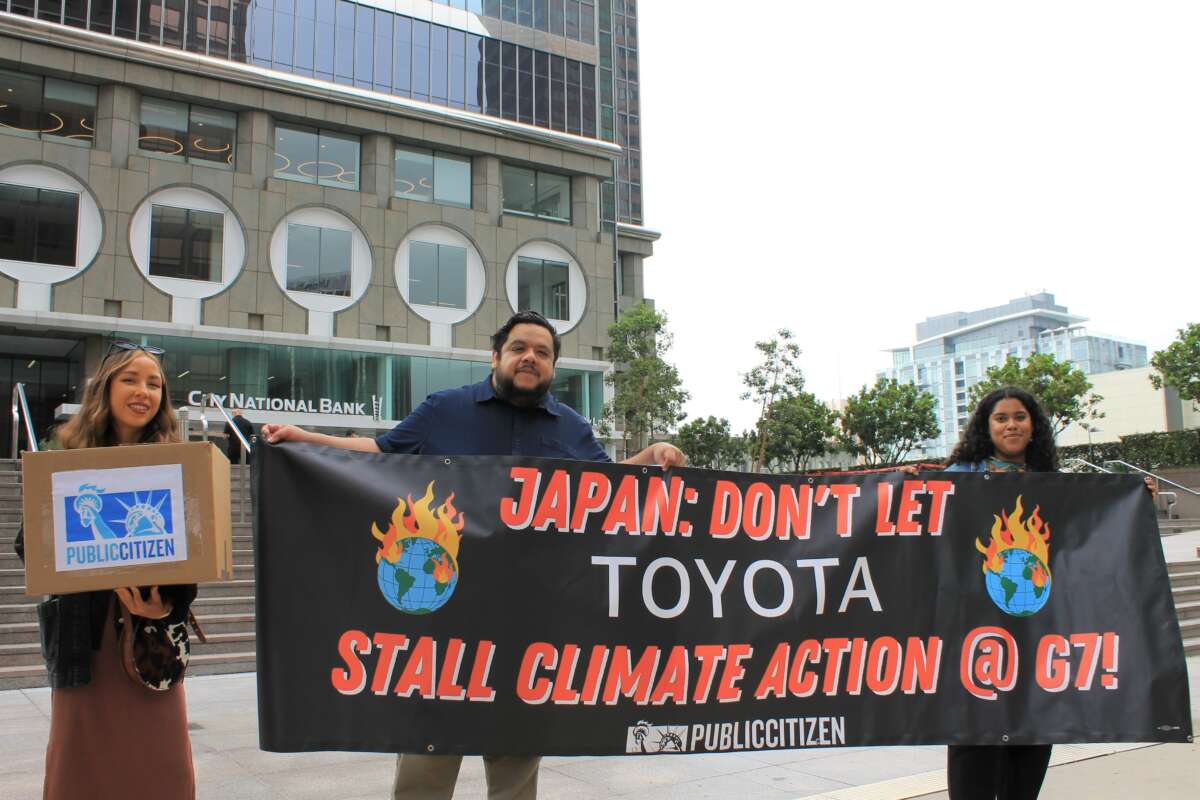
JUSTIN KNIGHT
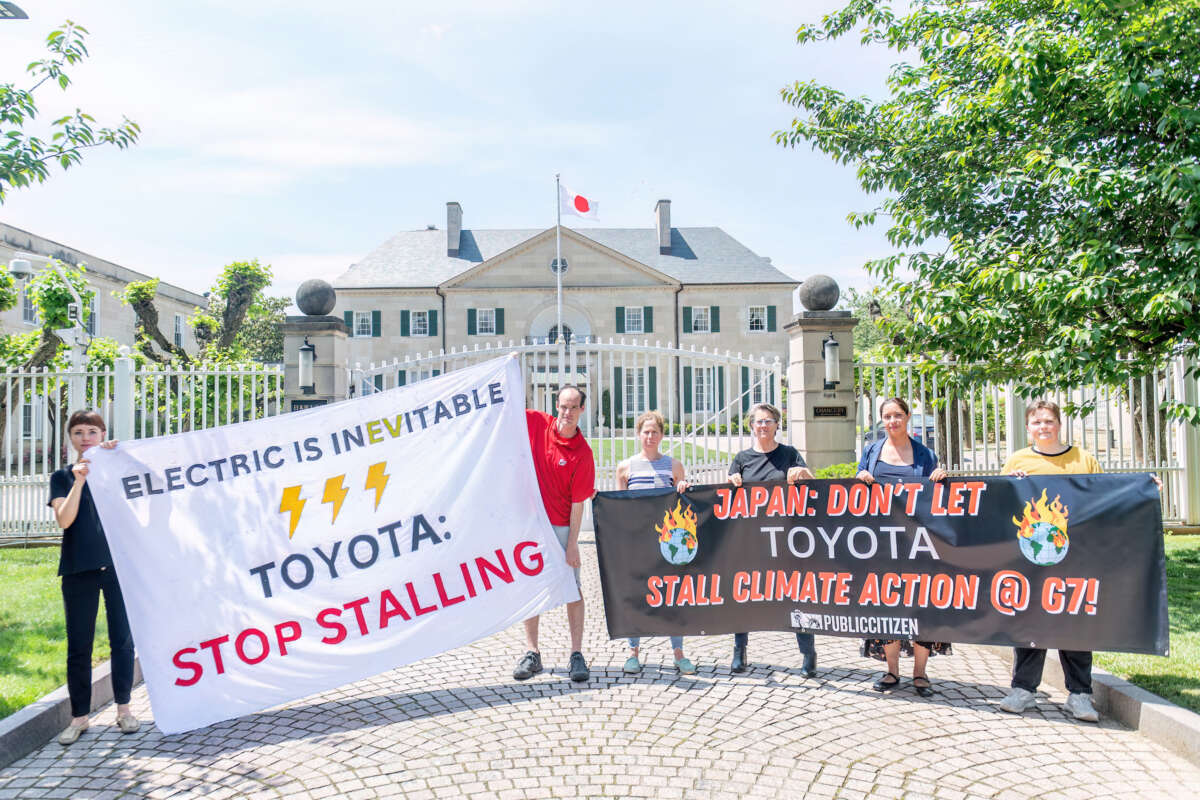
JUSTIN KNIGHT
“Our Fundamental Right of Self-Determination”
One of the lowest-scoring areas among all automakers analyzed by Lead the Charge was around Indigenous rights. Indeed, two-thirds of all 18 automakers scored a zero in this area.
This is alarming, several Lead the Charge partners told Truthout, since Indigenous communities are disproportionately impacted by the shift to EVs, and specifically the transition’s reliance on mining critical minerals needed to make vehicle batteries.
One new study estimates that, among 30 “energy transition minerals and metals” that “form the material base for the energy transition,” more than half of this resource base globally “is located on or near the lands of Indigenous and peasant peoples.” Another study finds that within the U.S., “97% of nickel, 89% of copper, 79% of lithium and 68% of cobalt reserves and resources” — all critical energy-transition minerals — “are located within 35 miles of Native American reservations.”
Kate Finn is the executive director of First Peoples Worldwide, which is part of the Lead the Charge network. A member of the Osage Nation, Finn has written extensively on violations of Indigenous rights by extractive industries mining for energy-transition minerals.
“Indigenous peoples in the U.S. have engaged with mining companies for 400 years,” she told Truthout. “It’s not new what happens when mining companies come to the territories of Indigenous people. Indigenous leaders are often not even consulted about what happens on their lands, and then the resources leave, without any or very little economic remuneration,” Finn said.
“But of course, the environmental degradation stays,” she said.
However, Finn says, “we have an opportunity now to not repeat this pattern in the green economy.”
To this end, a key demand of Lead the Charge is that automakers uphold Indigenous rights and self-determination by honoring the processing of Free, Prior and Informed Consent (FPIC).
Spelled out in the UN Declaration on the Rights of Indigenous Peoples, FPIC posits that Indigenous communities have the right to grant or withhold consent around projects that impact their land and resources, and that this decision should come after a substantive, prior period of consultation and dialogue. Indigenous communities can also negotiate the terms of approval for any project and withdraw their consent at any time.
Ultimately, FPIC is a mechanism to protect Indigenous self-determination.
Finn calls FPIC “the global consensus on minimum standards to respect the rights and well-being of Indigenous peoples globally” and “the safeguard of a whole basket of rights” for over 5,000 different Indigenous entities around the world.
Galina Angarova, the executive director of the Indigenous-led nonprofit Cultural Survival and a member of the Buryat people, the largest Indigenous group in Siberia, calls FPIC “a very specific right of Indigenous peoples that flows from our fundamental right of self-determination.”
Cultural Survival is also a Lead the Charge partner, and both Angarova and Finn are leaders in the Securing Indigenous Peoples’ Rights in the Green Economy (SIRGE) Coalition, which helped shape the Indigenous rights’ focus within Lead the Charge.
Angarova says the SIRGE Coalition formed after the Nornickel disaster of 2020 that spilled 21,000 tons of diesel into the Arctic subsoil and waters of a western Siberian region occupied by several Indigenous groups. The spill decimated water and fishing sources and hunting grounds. In the disaster’s aftermath, several groups came together to advance FPIC with private sector and governmental actors and, more broadly, to foreground Indigenous rights, self-determination and leadership in the green transition.
Angarova says the SIRGE Coalition’s goal is ensure that Free, Prior and Informed Consent is “implemented throughout the supply chain for the green economy, from the exploratory stages, to the end of the cycle, the product.”
“Unfortunately,” she says, “the initial Lead the Charge scorecard showed that, across the board, automakers are generally failing to incorporate Free, Prior and Informed Consent and Indigenous rights into their policies and to implement the practice.”
Some have raised frustrations with how corporations can approach FPIC — for example, treating it as one-way pro forma “information sharing” that glosses over Indigenous input and approval, a mere box to check before moving forward with a project.
Angarova stresses that “consultation does not equate to consent” under FPIC. Companies must have a “social license to operate” that can only be granted through the substantive and informed permission of Indigenous communities prior to the beginning of any operations.
She says that even when different actors warm up to FPIC, ensuring enforcement can be “very difficult,” and that the coalition is strategizing about how to ensure accountability. She highlights a range of injustices occurring today — for example, with a new lithium mining deal between Lithium Americas and General Motors opposed by the People of Red Mountain in Nevada.
“Indigenous lands, territories and resources are under direct threat,” says Angarova, because of the booming demand for transition metals such as copper, nickel, cobalt and lithium.
“As the demand for these minerals increases, Indigenous peoples also want to see an end to the climate crisis,” she said. “But this needs to be achieved in a way that respects their rights.”
All this begs the question: In addition to decarbonizing the auto supply chain, might a just energy transition also involve expanding modes of transportation that rely less on extraction — whether fossil fuels or critical minerals — altogether?
A recent report from the Climate and Community Project argues that lithium demand could be significantly reduced without impeding the shift away from internal combustion engines through building out public transportation. A greater role for green industrial policy and public ownership of key infrastructure could allow for planning that’s less reliant on mining the world’s critical energy-transition minerals.
Indeed, achieving a truly green and just transition will likely involve multiple and combined fronts.
OECD launches updated Guidelines on Responsible Business Conduct

The OECD today launched its newly updated Guidelines for Multinational Enterprises on Responsible Business Conduct.
The Guidelines are the globally leading standard on responsible business conduct and widely applied in public policy and business practice. The Guidelines were last updated in 2011. The 2023 update responds to urgent social, environmental, and technological priorities facing societies and businesses.
“The NCP welcomes the updated guidelines and has provided input to the process. Important changes concern efforts to combat climate change and safeguard biodiversity. The OECD Guidelines will thus remain the leading guidelines for companies that want to act responsibly. The updates also reinforce the role of the National Contact Points and emphasize their importance in ensuring compliance.” – Frode Elgesem, Chair of the NCP
The updated Guidelines are available here.
Key changes include:
- Recommendations for enterprises to align with internationally agreed goals on climate change and biodiversity
- Introduction of due diligence expectations on the development, financing, sale, licensing, trade and use of technology, including gathering and using data
- Recommendations on how enterprises are expected to conduct due diligence on impacts and business relationships related to the use of their products and services
- Better protection for at-risk persons and groups, including those who raise concerns regarding the conduct of businesses
- Updated recommendations on disclosure of responsible business conduct information
- Expanded due diligence recommendations to all forms of corruption
- Recommendations for enterprises to ensure lobbying activities are consistent with the Guidelines
- Strengthened procedures to ensure the visibility, effectiveness, and functional equivalence of National Contact Points on Responsible Business Conduct
The requirement to perform human rights due diligence in the Transparency Act is based on the OECD Guidelines. The OECD Due Diligence Guidance for Responsible Business Conduct is now reflected in Chapter 2 of the updated Guidelines. A Norwegian translation of the updated Guidelines will be prepared, and the NCP will provide more detailed information about what is new in the Guidelines.
Media enquiries should be directed to Frode Elgesem, chair of the NCP, via phone: + 47 416 96 089.
About the OECD Guidelines
The OECD Guidelines for Multinational Enterprises on Responsible Business Conduct (the Guidelines) are recommendations jointly addressed by governments to multinational enterprises to enhance the business contribution to sustainable development and address adverse impacts of business on people, planet and society. The Guidelines are supported by a unique implementation mechanism, the National Contact Points for Responsible Business Conduct (NCPs), established by governments to further the effectiveness of the Guidelines.
The update of the Guidelines was agreed by the 51 countries that adhere to the Guidelines, including both OECD members and non-members accounting for two-thirds of global trade and investment. The update benefitted from close involvement of the institutional stakeholders Business at OECD, the Trade Union Advisory Committee to the OECD, and OECD Watch, representing the views of millions of businesses, workers, and civil society members globally. The process also included two public consultations open to interested stakeholders from all countries.
Activist organizes concert in Yarmouth to benefit Ukrainian children
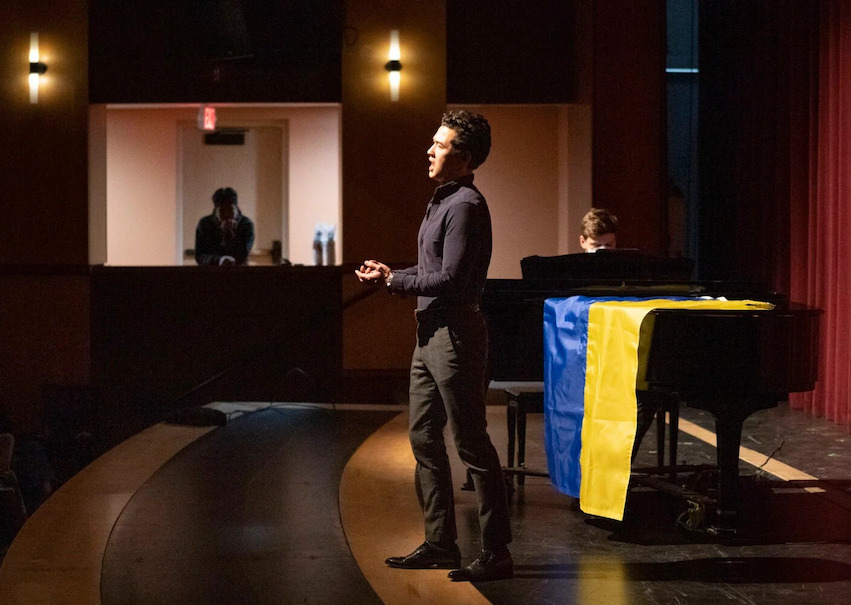
Pavel Sulyandziga and a Yarmouth High School student have teamed up to present a benefit concert performed by his opera singer son, Pavel Sulyandziga Jr.
Human rights activist Pavel Sulyandziga Sr. of Yarmouth has been fighting for the rights of his fellow Crimean Tartar people for years and empathizes with the people of Ukraine suffering through the Russian invasion.
With the help of his son and a Yarmouth High School student, he is organizing a benefit concert for Ukrainian children. The concert, featuring his son, opera singer Pavel Sulyandziga Jr., will be held from 6 p.m. to 7 p.m. Sunday, June 11, at the Universalist Church in Yarmouth. Attendance is free but donations are encouraged. Sulyandziga Jr. also performed to benefit Ukraine last year at the church.
“For me, it’s very sad and painful to see how Russia became an aggressor,” Sulyandziga Sr. told The Forecaster with the help of interpreter Vera Solovyeva. “Families have been shattered by the war and separated.”
Sulyandziga is chairperson of the Board of the International Development Fund of Indigenous Peoples of Russia, which “helps Indigenous people to protect their rights and in their efforts to get justice, life and dignity,” he said. The foundation was 10 years old in 2014 when Russia occupied Crimea, and the Russian government declared it a foreign agent in 2015, he said. In 2016, foundation workers were charged as criminals and forced to leave the country. Sulyandziga settled in Yarmouth, was granted asylum and registered the foundation as an NGO in the U.S. in 2018.
As a former member of the Civic Chamber of the Russian Federation, he said he felt a particular duty to stand up against Russian wrongdoings in Ukraine.
“The future of any country are children, and children are the most vulnerable part of society, so we must help them for the future of the nation,” Sulyandziga said.
When his son proposed a concert to raise funds for Ukrainian children, he supported the idea as a way to bring awareness to the plight of the people and families of Ukraine, he said.
Yarmouth High School freshman Katya Fromuth heard about the plan for a benefit concert and wanted to be involved in the “really great cause.” The plight of Ukrainians had been weighing on her.
“Always seeing it on the news and hearing it on the radio, it makes you want to do something,” Fromuth said.
She has been involved in political activism from a very young age, she said, and offered her volunteer services to Sulyandziga, who welcomed them.
“I really want to appreciate Katya’s support in organizing the concert and event,” he said.
Music is a beautiful way to appeal to empathy and humanity, Fromuth said.
“Sometimes things are better sung than spoken,” she said, adding that the pain of what others have experienced often comes through more clearly in music than in conversation.
“It can be easy to forget very important things that are happening in other parts of the world,” she said.
The event will open with a speech from a representative of the Crimean Tartar Resource Center, the organization which the event will benefit. The center is working towards the de-occupation and reintegration of Crimea.
Indigenous land rights key to curbing deforestation and restoring lands: Study
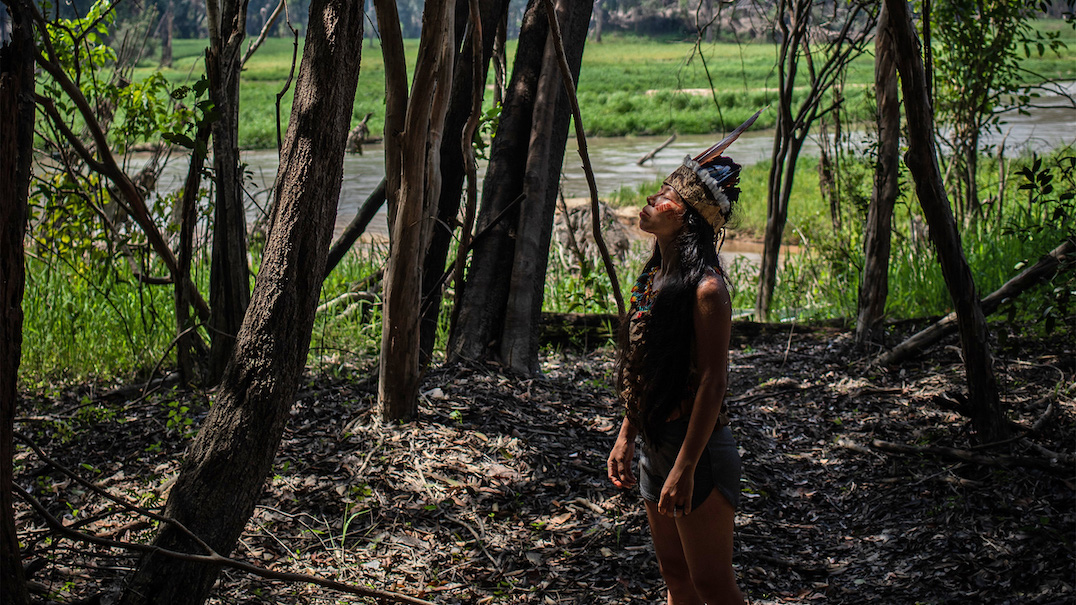
- Indigenous communities with land rights in Brazil’s Amazon not only curb deforestation, but better restore deforested land in their territories than the privately owned and unincorporated lands around them.
- Secondary forest coverage on previously deforested lands grew 5% inside Indigenous territories with tenure over the 33-year research period. This is 23% more growth than directly outside their borders.
- Secondary forests are around two years older on average inside Indigenous territories than outside their borders.
- Some scientists worry that reforestation research and policies are distracting from a much larger issue in the Amazon: the deforestation of old-growth forests. But these authors say policies that support Indigenous land rights can help stop deforestation and restore forests.
Indigenous territories with secure land rights not only reduce deforestation inside their lands in the Brazilian Amazon, but also lead to higher secondary forest growth on previously deforested areas, says a new study.
This new report, published in The Proceedings of the National Academy of Sciences, is off the back of multiple studies in recent years pointing to the efficiency of Indigenous forest conservation in Brazil’s Amazon once their territories gain full recognition by the government. According to the report, these territories support higher rates of secondary forest growth than the privately owned and unincorporated lands around them.
The secondary forests that grow back after clearing of original old-growth help revive biodiversity and capture carbon, combating climate change. Regenerated forests, also known as secondary forests, attempt to mimic the old-growth forest that was once there and act as carbon sinks, explains environmental and natural resource economist Nilesh Shinde, a postdoc at the University of Massachusetts Amherst and a co-author on the paper.
“Granting tenure to these Indigenous lands in Brazil is not only a really good human rights policy, but it’s actually a great environmental policy as well,” says political scientist Kathryn Baragwanath, now at the Australian Catholic University in Melbourne, Australia, and lead author of the study.
Land tenure prevents outsiders from entering territories for logging, mining, setting up crop pastures and land-grabbing, and it protects Indigenous traditional ways of life largely based on forest stewardship. Studies show this form of land protection contains some of the most healthy forests with only 1.6% of deforestation in Brazil from 1990 to 2020 occurring on these protected Indigenous lands.


Researchers found that secondary forest coverage on previously deforested lands grew 5% inside Indigenous territories with tenure over the 33-year research period. This is 23% more growth than directly outside their borders.
They also found that forests inside fully recognized Indigenous community borders were around two years older on average, which the authors attribute to forests being more likely to grow back and less likely to be cut down after recovering inside Indigenous territories.
The authors used remote satellite data from 1986 to 2019 to observe the proportional growth of secondary forest coverage inside and outside of 377 Indigenous territories. Some of these Indigenous territories received tenure within the study window, while others have yet to, allowing the authors to compare before, after or without tenure.
The study excluded protected areas from its scope, focusing on comparing Indigenous management with private and unincorporated lands. Baragwanath says she and co-author Ella Bayi, a Ph.D. student at Columbia University, are now working on comparing secondary forests on Indigenous territories with other types of protected areas in Brazil. Protected areas in Brazil have a comparable deforestation rate to Indigenous territories.

To restore deforested lands, many Indigenous communities tend to take on a holistic approach. The authors provide the example of Rede Sementes do Xingu, a grassroots organization led by Indigenous peoples and local family farmers. Their mission is to promote the restoration of the Amazon through the preservation and distribution of diverse native seeds while honoring the autonomy of Indigenous peoples. They have recovered more than 7,000 hectares (17,297 acres), planting 25 million trees and providing nearly $7 million in income to seed collectors in the local communities.
After 40 years, secondary forests can recover an average of 88% of their species richness, according to a 2018 study in Global Change Biology. As they generate new growth, they can also capture up to 11 times more carbon than old-growth forests, according to a 2016 study in Nature. But, a 2020 study in Ecology found that secondary forests in Brazil uptake only about twice as much as primary forests. It also takes time for secondary forests to grow and meet old-growth forests’ carbon capture capabilities.
Despite carbon uncertainties, regenerating the forest provides benefits to the ecosystem and global climate and also to the local communities who rely on it, says Shinde.
In 2015, the Brazilian government pledged to restore 12 million ha (about 30 million acres) of native vegetation in the Amazon by 2030 as part of the Paris Agreement. But under former President Jair Bolsonaro, deforestation rose by nearly 60%. The lush lands of the Amazon are in high demand for cattle ranching and soy plantations, largely encouraged by Bolsonaro and pro-agribusiness lawmakers, leading to the clearing of forests. In 2022, scientists estimated that more than 13% of the Amazon’s original old-growth forest was gone, a chunk of land bigger than double the size of California.
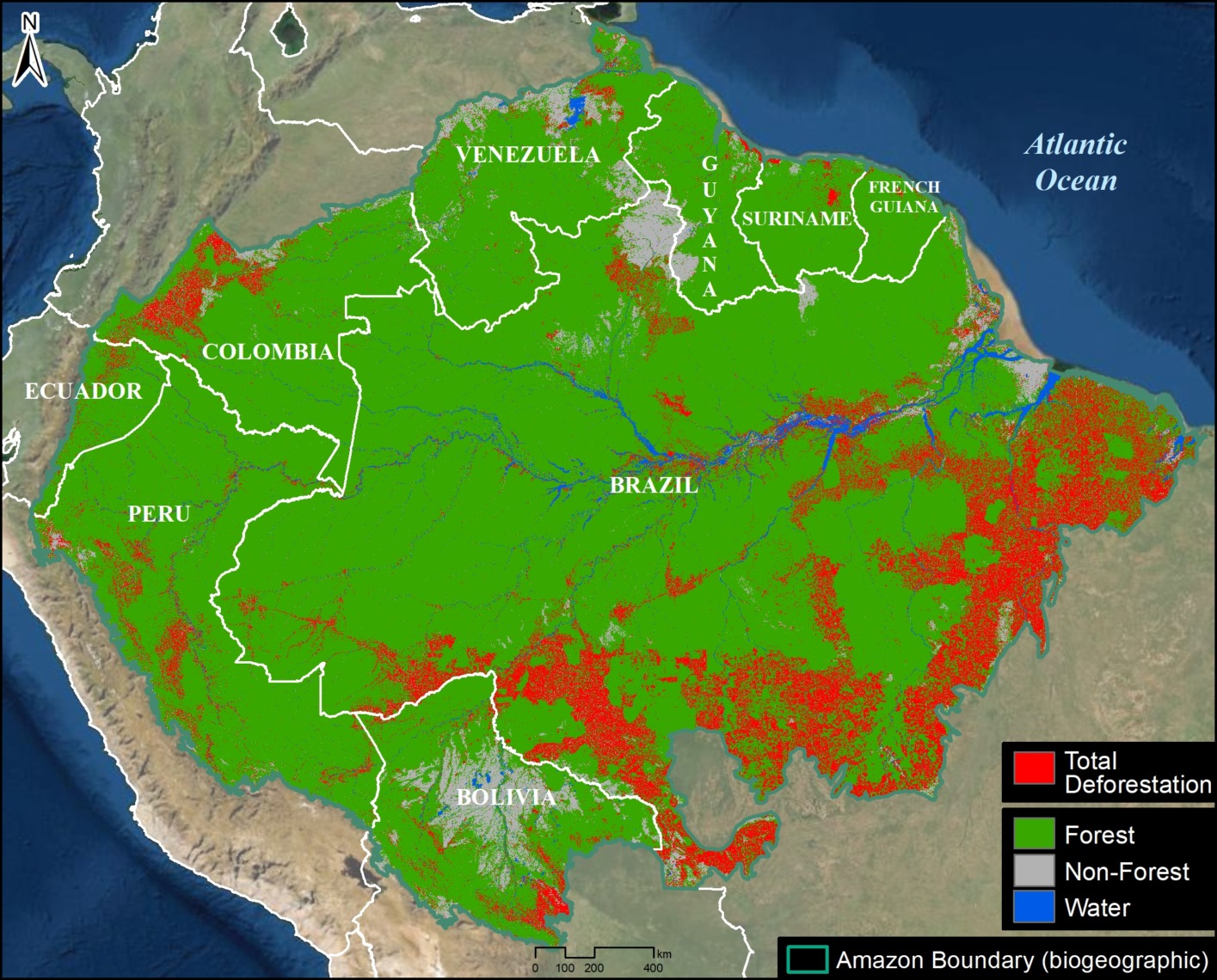
Now, Brazil’s new president, Luiz Inácio Lula da Silva, promised to restore environmental policies, forests destroyed in recent years and the Paris Agreement reforestation goals.
But, “Not all trees are equal,” says Shinde. Plantations with expanses of single native species used for agriculture, like oil palm, also count toward reforestation goals. But their benefits can’t compare to secondary forests, which attempt to mimic the diverse old-growth trees once there, says Shinde.
The authors hope their findings can drive policies that encourage the tenure of Indigenous territories in Amazonia. “If Brazil wants to reach its climate goals, these are actually really good policies to pursue,” says Baragwanath. At the moment, there are 726 Indigenous territories in Brazil covering 23% of Brazil’s swath of the Amazon, while 487 are tenured. President Lula says he is committed to recognizing more territories during his administration.
But some argue that secondary forests are taking too much of the limelight. The study’s emphasis on secondary forests neglects the real issue at hand in the Amazon: stopping deforestation, says biologist Philip Fearnside, head researcher at the National Institute for Amazonian Research who was not involved in this study.
“This restoration in different deforested areas is a glorified detour,” says Fearnside. “You’re doing something but not actually facing the deforestation problem.” But, he says, reforestation is a more appealing solution than protecting the old-growth forest still there.
“If you restore a few hectares of forests, you can go and make a video clip of trees with smiling children and so forth,” argues Fearnside. “You have something to show, whereas if you’ve done something that changed the policy that has produced deforestation somewhere you don’t have anything concrete to go and show for it.”

Baragwanath agrees that deforestation should be the first and foremost concern, pointing to her 2020 publication on the value of Indigenous territories in preventing deforestation. But she says this recent study, among others, shows the important role secondary forests also play.
“If you can enact one policy that does both things at the same time, that’s even better than doing a policy that only does one thing,” says Baragwanath. “What we’re doing in the second paper is actually measuring even other positive effects of granting tenure, which hasn’t been considered before, but actually are quite sizable as well.”
Shinde also agrees that deforestation is a top concern and that restoration and stopping deforestation can go “hand in hand.” “Even small patches of secondary forests can help combat climate change and improve biodiversity,” says Shinde, referencing this 2019 study in Global Change Biology.
“But I totally agree that if you were a policymaker, and you had a budget, you would 100% first want to focus on policies that target deforestation,” says Baragwanath.
Mark Zdor: “I was threatened with arrest in RAIPON”
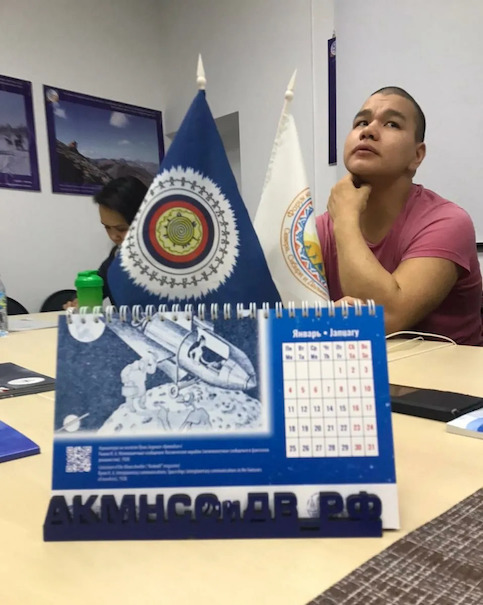
Interview with youth activist of the indigenous peoples of the North of Russia Mark Zdor.
We met with Mark Zdor in Berlin, in the building of the Bundestag (German Parliament), where we took part in parliamentary hearings on the problems of the indigenous peoples of Russia.
A young guy, strong, downed – a representative of the Chukchi people turned out to be an interesting conversationalist. To my question – how did he end up in Berlin and why did he come, he replied: “it’s a long story.” I, in turn, explained that I have time and I am ready to listen if the story is interesting. Here’s what he said.
Hello Mark. Nice to meet you. I did not expect at all that I would meet one of our northerners in Berlin. My name is Dmitry and I am the editor of the Russia of Indigenous Peoples website. We publish materials about the rights and problems of the indigenous peoples of the North, Siberia and the Far East, and of course it was very interesting to meet you in Germany . Who you are? Tell a few words about yourself.
My name is Mark Zdor. I was born in the small village of Neshkan, on the shores of the Chukchi Sea. This is a Chukotka village of sea hunters and reindeer herders. I was brought up on the traditional values of the Chukchi – take care of nature, respect elders, value freedom and equal rights for everyone.
After finishing school, I continued my education. In 2014, I graduated from the Khabarovsk School as a plasterer-painter. In 2020, I graduated from the College of Physical Culture and Sports with a degree in physical education and sports teacher, wrestling coach and teacher.
In 2020, I entered the Herzen University of St. Petersburg at the Institute of the Peoples of the North. Philology became my specialization. At the University, I also studied the culture of the peoples of the North of Russia. I dreamed of exploring the current state of the Chukchi language and the dynamics of its use. I also have some research experience. I wrote a research essay on the topic “National Sports of the Peoples of the North”. Despite the fact that I am currently in exile, I continue to study the cultural values of my people.
Are you in exile? So you left Russia? Forever? How did it happen?
It’s quite hard to figure it out, but in general, during the time when I was in college and then at the university, I got involved in social activities because I realized that no one but us, representatives of the indigenous peoples, can preserve our identity.
In 2019, I joined the Association of Indigenous Peoples of the North, Siberia, and Far East of the Russian Federation (RAIPON) – you probably know about this organization.
Yes, heard.
In RAIPONe, I started working in a youth organization. We have put a lot of time and effort into preserving the culture of the indigenous peoples of the Russian Arctic. I dreamed of visiting all the Arctic regions of Russia in order to personally get acquainted with the culture of the indigenous peoples who live there. In those years, I was sure that we, at RAIPON, were working to protect the rights and preserve the identity of the indigenous peoples of Russia and the world. I worked there very actively, I think.
In 2020, the Vice President of RAIPON, Veysalova Nina Glebovna, “recommended” us to vote for Putin’s amendments to the Russian Constitution. Many of my colleagues in social work, representatives of the youth of indigenous peoples, students were indignant at the fact that we were dictated what to vote for.
We were told that this would do us good, but we all understood that this was only necessary so that Vladimir Putin would have the opportunity to be elected for another presidential term. After these events, I realized that RAIPON is a quasi-governmental organization and became distrustful of its leaders and their activities.
Nina Glebovna personally threatened me with prison. As it turned out, the leadership of RAIPON and the Institute of the Peoples of the North have a close relationship. They discuss everything among themselves and report to the University about political activists – students from among the indigenous peoples. All my peers who criticized the Russian authorities were psychologically pressured by RAIPON leaders and threatened with expulsion, problems with employment, and even imprisonment.
After the poisoning of Alexei Navalny in 2021, I finally came to the conclusion that political changes are needed in Russia. Like many tens of thousands of Russians, I went out to protest at the beginning of 2021. After the January rallies, I was called to the St. Petersburg branch of RAIPON because I posted a post about the rally on Instagram. Because of the persecution, many members of our youth organization were afraid to protest and speak out against political repression in Russia. At RAIPON, I was threatened with expulsion from the university, that they would make sure that no one would hire me, as well as with arrest and even prison. The leaders of RAIPON also forced me to return to the organization, tried in many ways to change my views. In addition, they tried to bribe me – they offered me paid work. Despite these threats, I eventually left RAIPON.
But how did you end up abroad?
In February 2022, immediately after the start of the war, I was detained in St. Petersburg at a rally “AGAINST THE WAR IN UKRAINE” and taken to the police station. A day later, a trial took place and I was fined.
At the police station, they told me that we, the protesters, are enemies of the people, and Putin supports the actions of the police and they can do whatever they want with us. In the police station where I was, the policemen mocked us, did not let us drink. We also could not sleep, because. the cell of the police station was overcrowded. My friend brought me a package – food, water and clothes, but they didn’t let him in and they didn’t give me the package, and they didn’t let us see a lawyer from a human rights organization, where we managed to report our arrest. Some of the guys were beaten, they did not let an ambulance to them for a long time, which was eventually called only after 5 hours in the cage.
After I was released from the police and I came to the university, they began to threaten me with expulsion and prison, and RAIPON representatives called and wrote to my relatives also with threats. After this arrest and before leaving Russia, the police came to my house several times. They checked what I was doing, even on weekends.
A couple of days after the arrest, I also received a message from a person with the nickname “Criminalist”. She wrote to me on social networks with words of support, but I suspect that it was some kind of provocateur on the part of the security forces. As a result, I closed access for outsiders to my page. I think she was testing me for extremism. Later, I also learned that both the University and RAIPON sent a testimonial to the police department, where they described me in a negative way.
And by mid-March, it became known that in connection with the Russian invasion of Ukraine, Russian legislation was sharply tightened and that arrests at rallies would lead to criminal cases. Therefore, I decided to leave Russia. I bought tickets for the next flight and flew to Georgia. At the Moscow airport, the border guards searched me and my personal belongings, but let me out of the country.
Yes, but how did you end up in Germany?
Since March 16, 2022, I have lived in Georgia for a whole year. At first he was afraid to return because of his anti-war position. But then, when the mobilization began, I realized that the opportunity to be mobilized for war was added to this. Therefore, I applied to the German Embassy in Georgia in order to obtain a humanitarian visa. I told my story in an interview, showed documents that I was arrested, about police supervision and others. As a result, I received a humanitarian visa and flew to Germany.
Already when I was here, I received an invitation from the Bundestag to come to Berlin and tell my story.
Thanks Mark for sharing. I hope that in the future you will have the opportunity to live in safety and study the culture and language of your people, as you originally planned, even while in Germany.
03/30/2023, Berlin, Germany